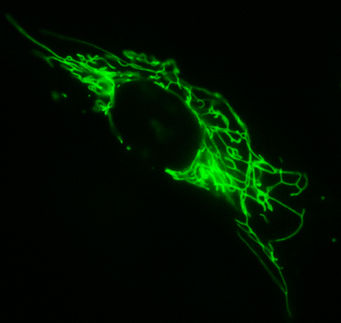Addex's ADX48621 Effective in Preclinical Parkinson's Disease Studies
Allosteric modulation company Addex Pharmaceuticals Ltd presented encouraging data from preclinical studies demonstrating the anti-Parkinson's effects of ADX48621, a novel drug candidate that has completed three Phase I clinical trials.
Addex presented preclinical data at the 14th International Congress of Parkinson's Disease and Movement Disorders held in Buenos Aires, Argentina showing that ADX48621 was effective in two well-established models of PD: the MPTP monkey model of Parkinson's disease levodopa induced dyskinesia (PD-LID) and the rat haloperidol induced catalepsy (HIC) model of PD symptoms. Addex previously disclosed that ADX48621, a negative allosteric modulator (NAM) of the metabotropic glutamate receptor 5 (mGluR5), was effective in these models and had achieved satisfactory pharmacokinetics, safety and tolerability in three separate Phase I clinical trials in a total of 130 healthy volunteers, including older subjects.
PD-LID develops in most PD patients after receiving levodopa for several years. It is a complication caused by dopamine replacement therapy (i.e. levodopa). The two main components of LID are chorea and dystonia. Chorea is manifest as sudden rapid uncontrolled movements (e.g. jerking). Dystonia is manifest as slow writhing type movements and sustained muscle contractions, which can be painful.
In the MPTP model of PD-LID, ADX48621 (30 mg/kg) statistically and significantly inhibited LID. At this dose, ADX48621 almost abolished chorea and dystonia, the two major components of LID, without affecting the beneficial effects of levodopa as determined by disability scores.
In the rat HIC model of PD, ADX48621 decreased catalepsy time dose dependently, by 19% 43%, 53%, and 65% at 1, 3, 10 and 30 mg/kg, respectively, compared to vehicle control. There was a trend to efficacy at 3mg/kg, with statistical significance at 10 (p < 0.01) and 30 mg/kg (p<0.001). These data show that the minimal effective dose of ADX48621 was 10 mg/kg, with a corresponding plasma concentration of about 1700 ng/ml.
"We are very encouraged by these data, particularly the effect of ADX48621 on dystonia, a debilitating movement disorder in PD and also in other patients who do not have PD. To our knowledge, no other drug on the market or in development has demonstrated this level of activity in this primate model. Furthermore, the data from the HIC model indicate that, in the long-run, ADX48621 also could be tested as a treatment for the general symptoms of PD, potentially as a complementary drug that would allow doctors to optimize levodopa dosing," noted Charlotte Keywood, chief medical officer at Addex. "There is currently no treatment approved for PD-LID and with the condition affecting so many people. We look forward to starting Phase II testing of ADX48621 in PD-LID and dystonia patients around the end of this year."
Other news from the department research and development

Get the life science industry in your inbox
By submitting this form you agree that LUMITOS AG will send you the newsletter(s) selected above by email. Your data will not be passed on to third parties. Your data will be stored and processed in accordance with our data protection regulations. LUMITOS may contact you by email for the purpose of advertising or market and opinion surveys. You can revoke your consent at any time without giving reasons to LUMITOS AG, Ernst-Augustin-Str. 2, 12489 Berlin, Germany or by e-mail at revoke@lumitos.com with effect for the future. In addition, each email contains a link to unsubscribe from the corresponding newsletter.






















































